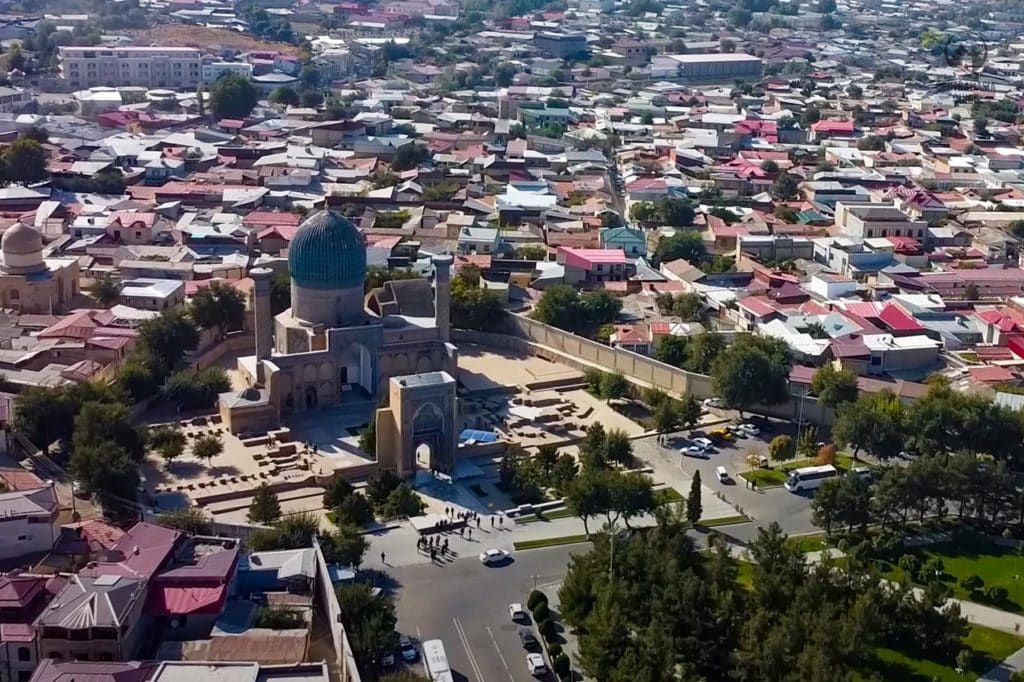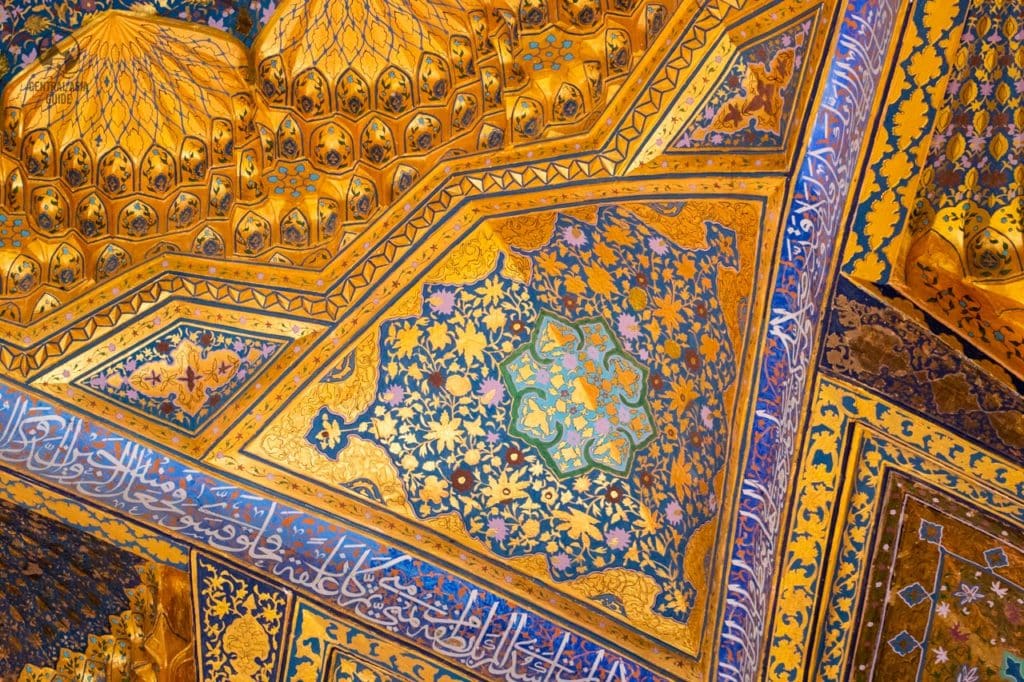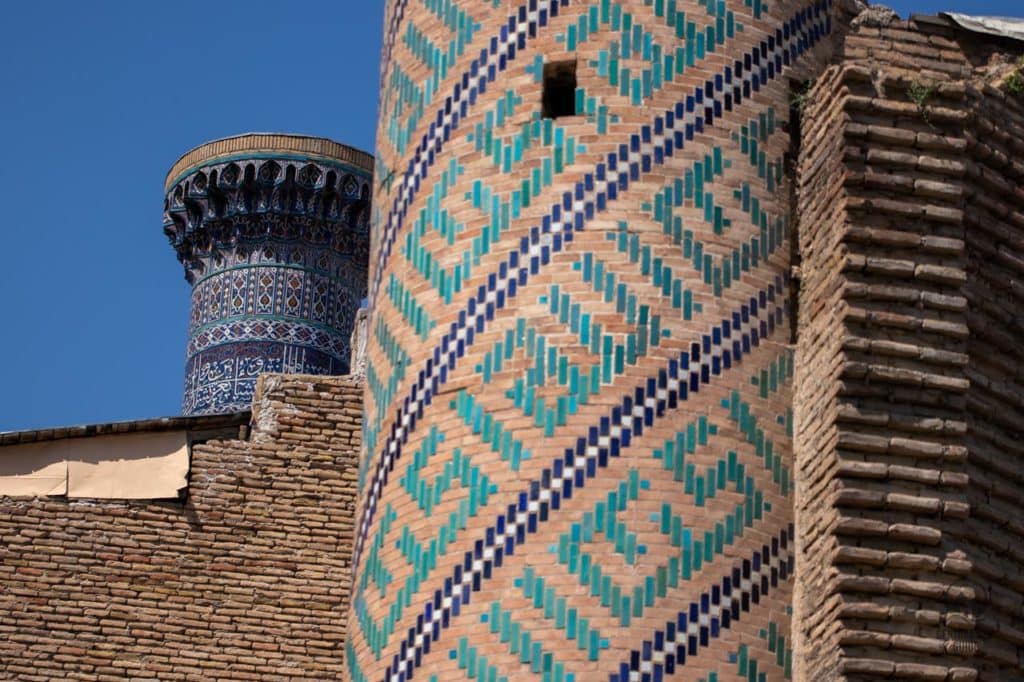Gur e Amir
Gur e Amir - Mausoleum of Timur
Gur e Amir translates as the “tomb of the ruler” or “tomb of the Emir” and it is the mausoleum of the great Uzbek hero and conqueror Tamerlane (or Amir Temur) and of many of his family members and other close people. Gur-Emir complex is one of the most known sights of Samarkand even though Amir Temur wanted to be buried in a simple tomb in his hometown Shakhrizabz. His relatives and advisers had contradicting plans that became a reality when Amir Timur died during a great Chinese campaign and got therefore buried in the Gur-Emir Mausoleum in Samarkand. This mausoleum is located in the center of Samarkand, southwest from Registan and not far from the large Amir Timur monument.


Gur e Amir mausoleum
The Gur-e Amir or Guri Amir is a mausoleum that occupies a significant place in the history of Turko-Persian Architecture. Some researchers believe that this tomb became the prototype and basis for such famous historical monuments as the tomb of Humayun (Mughal ruler in current India) and later Taj Mahal. The Gur i Amir was actually originally built for Timur’s grandson Muhammad Sultan (1376-1403) who was expected to be his successor but died too early for it to become reality.
Timur was devastated of this and ordered to build the mausoleum but he did not live to see the it completed as he died in 1405. The mausoleum was finally completed by Mirzo Ulugbeg, a famous grandson of Timur, after the eastern gallery and southern funeral structures had already been finished.


Gur e amir also holds the tombs of three other Timurid governors as well his sons Timur-Miranshah (1366-1408), Shahruh (1377-1447) and his grandson Mirzo Ulugbeg (1396-1449). Miranshah was the third son of Timur. At the age of 20, Miranshah defeated the troops of Tokhtamish-Khan in the Caucasus and became the governor of the western regions of the state in the 1390s.
In 1408, Miranshah was killed in a battle against the Turkmen and his remains were transferred to Maverannahr and reburied in Gur-Emir.
Gur i Emir is also the burial place for the remains of Seyid Berke, the spiritual teacher of Amir Timur and it is told that in addition it is the resting place of another cleric called Seyid Umar, who is the son of Bukhara Sheikh Amir Kulal.


The youngest son of Amir Timur, Shahruh, was elevated in Khurasan at age 20. He became the supreme governor of the vast state upon his father’s death. He then gave the throne to his son, Mirzo Ulugbeg, who ruled for forty years. Shahruh died during a military campaign and was first buried in Herat. Ulugbeg came twice to Khurasan and finally took the Herat throne and brought his father’s remains to Samarkand. In 1449 Ulugbeg’s son Abdullatif rose in rebellion, dethroned his father and organized his murder. Abdullatif was also soon dethroned.


Curse of Timur's tomb
Timur’s curse is a legend related to the opening of Timur’s tomb and the timing of the Nazi invasion that took place just in two days after it took place on June 20th of 1941 by Russian scientists. Timur’s tombstone had 2 inscriptions warning about the curse: ”Whoever disturbs my tomb will unleash an invader more terrible than I am” and ”When I rise from the dead, the world should tremble”. There were also local rumors that opening the tomb would curse those who open it.
The expedition continued with the opening regardless of the warnings and the remains were sent to Moscow. Local elderly people believed that the curse was real and warned them that the curse will affect them within 3 days from the date of opening. Who knows what the history would have looked like if they had let the tomb untouched.
Sights near Gur e Amir
Page updated 24.3.2022